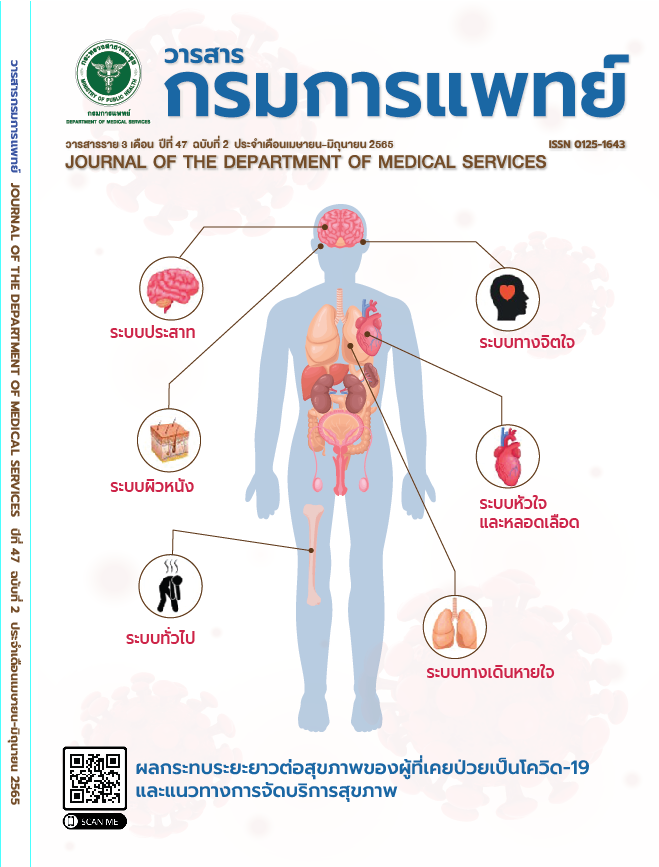Comparison of Ondansetron and Ondansetron with Propofol to Prevent Intrathecal Morphine-induced Pruritus in Patients Undergoing Cesarean Section
Keywords:
intrathecal morphine, pruritus, ondansetron, propofolAbstract
Background: Intrathecal morphine is the frequently used technique for cesarean section because of the safety and postoperative analgesia efficacy. However, pruritus is the most common side effect associated with spinal opioid administration. It is often difficult to treat and may be unpleasant for patient leading to patient dissatisfaction. Objective: This randomized controlled trial aimed to compare the effect of ondansetron and ondansetron with propofol to prevent intrathecal morphine-induced pruritus in patients undergoing cesarean section. Methods: 90 patients scheduled for cesarean section under spinal anesthesia with intrathecal morphine 0.2 mg added to 10 -12 mg bupivacaine were randomly allocated into two groups. After child birth, group 1(n=45) received intravenous 8 mg ondansetron. Group 2 (n=45) received intravenous 8 mg ondansetron and propofol 0.5 mg/kg. The incidence and severity of pruritus, postoperative nausea and vomiting and other complication were assessed during recovery and at 4, 8, 24 hours following intrathecal morphine. Results: The incidence of pruritus was significantly less frequent in patients who received ondansetron with propofol compare with those who received ondansetron alone (31.1% vs. 55.5%, p=0.029 at 4 hours and 57.7% vs. 75.6%, p=0.037 at 8 hours). The number of patients requesting treatment for moderate to severe pruritus was significantly lower in the ondansetron with propofol group than the ondansetron group (6.7% vs 24.4%, p=0.02). There was no significant difference between two groups in PONV. Conclusion: Ondansetron with propofol prophylaxis significantly reduced incidence and severity of intrathecal morphine induced pruritus compared with ondansetron alone in patient undergoing cesarean section.
References
Bujedo BM. An Update on Neuraxial Opioid Induced Pruritus Prevention. J Anesth Crit Care Open Access 2016; 6: 00226. DOI: 10.15406/jaccoa.2016.06.00226
Siddik-Sayyid SM, Aouad MT, Taha SK, Azar MS, Hakki MA, Kaddoum RN, Nasr VG, Yazbek VG, Baraka AS. Does ondansetron or granisetron prevent subarachnoid morphine-induced pruritus after cesarean delivery? Anesth Analg 2007; 104: 421-4.
Charuluxananan S, Kyokong O, Somboonviboon W, Narasethakamol A, Promlok P. Nalbuphine versus ondansetron for prevention of intrathecal morphine-induced pruritus after cesarean delivery. Anesth Analg 2003; 96: 1789-93.
George RB, Allen TK, Habib AS. Serotonin receptor antagonists for the prevention and treatment of pruritus, nausea, and vomiting in women undergoing cesarean delivery with intrathecal morphine: a systematic review and meta-analysis. Anesth Analg 2009; 109: 174-82.
Kampo S, Afful AP, Mohammed S, Ntim M, Buunaaim ADB, Anabah TW. Sub-hypnotic dose of propofol as antiemetic prophylaxis attenuates intrathecal morphine-induced postoperative nausea and vomiting, and pruritus in parturient undergoing cesarean section - a randomized control trial. BMC Anesthesiol 2019; 19: 177.
Horta ML, Morejon LC, da Cruz AW, Dos Santos GR, Welling LC, Terhorst L, Costa RC, Alam RU. Study of the prophylactic effect of droperidol, alizapride, propofol and promethazine on spinal morphine-induced pruritus. Br J Anaesth 2006; 96: 796-800.
Chua WY, Wan Mat WR, Md Nor N, Mohammad Yusof A, Masdar A, Abdul Rahman R. Abstract PR389: Comparing sub-hypnotic dose of propofol to prevent intrathecal morphine-induced pruritis in caesarean delivery. Anesth Analg 2016; 123: 495.
Sarasen P, Leesan A. Propofol for prevention of pruritus from intrathecal morphine in patients undergoing cesarean section. Thai J Anesthesiology 2012; 38: 22-32.
Charuluxananan S, Kyokong O, Somboonviboon W, Lertmaharit S, Ngamprasertwong P, Nimcharoendee K. Nalbuphine versus propofol for treatment of intrathecal morphine-induced pruritus after cesarean delivery. Anesth Analg 2001; 93: 162-5.
Bailey PL, Rhondeau S, Schafer PG, Lu JK, Timmins BS, Foster W, Pace NL, Stanley TH. Dose-response pharmacology of intrathecal morphine in human volunteers. Anesthesiology 1993; 79: 49-59.
Slappendel R, Weber E, Benraad B, Van Limbeek J, Dirksen R. Itching after intrathecal morphine. Incidence and treatment. European Journal of Anaesthesiology 2000; 17: 616-621.
Moustafa AA, Baaror AS, Abdelazim IA. Comparative study between nalbuphine and ondansetron in prevention of intrathecal morphine-induced pruritus in women undergoing cesarean section. Anesth Essays Res 2016; 10: 238-244.
Milner AR, Bogod DG, Harwood RJ. Intrathecal administration of morphine for elective Caesarean section. A comparison between 0.1 mg and 0.2 mg. Anaesthesia 1996; 51: 871-3.
Swart M, Sewell J, Thomas D. Intrathecal morphine for caesarean section: an assessment of pain relief, satisfaction and side-effects. Anaesthesia 1997; 52: 373-7.
Mowafy, S., El Sayed, M. Comparative study between the effects of Nalbuphine, Propofol, and Ondansetron for control of intrathecal opioid induced pruritus in parturients after cesarean section: Randomized Controlled Trial. Zagazig University Medical Journal 2020; (): -. DOI: 10.21608/zumj.2020.26203.1775.
Downloads
Published
How to Cite
Issue
Section
License
Copyright (c) 2022 Department of Medical Services, Ministry of Public Health

This work is licensed under a Creative Commons Attribution-NonCommercial-NoDerivatives 4.0 International License.
บทความที่ได้รับการตีพิมพ์เป็นลิขสิทธิ์ของกรมการแพทย์ กระทรวงสาธารณสุข
ข้อความและข้อคิดเห็นต่างๆ เป็นของผู้เขียนบทความ ไม่ใช่ความเห็นของกองบรรณาธิการหรือของวารสารกรมการแพทย์



